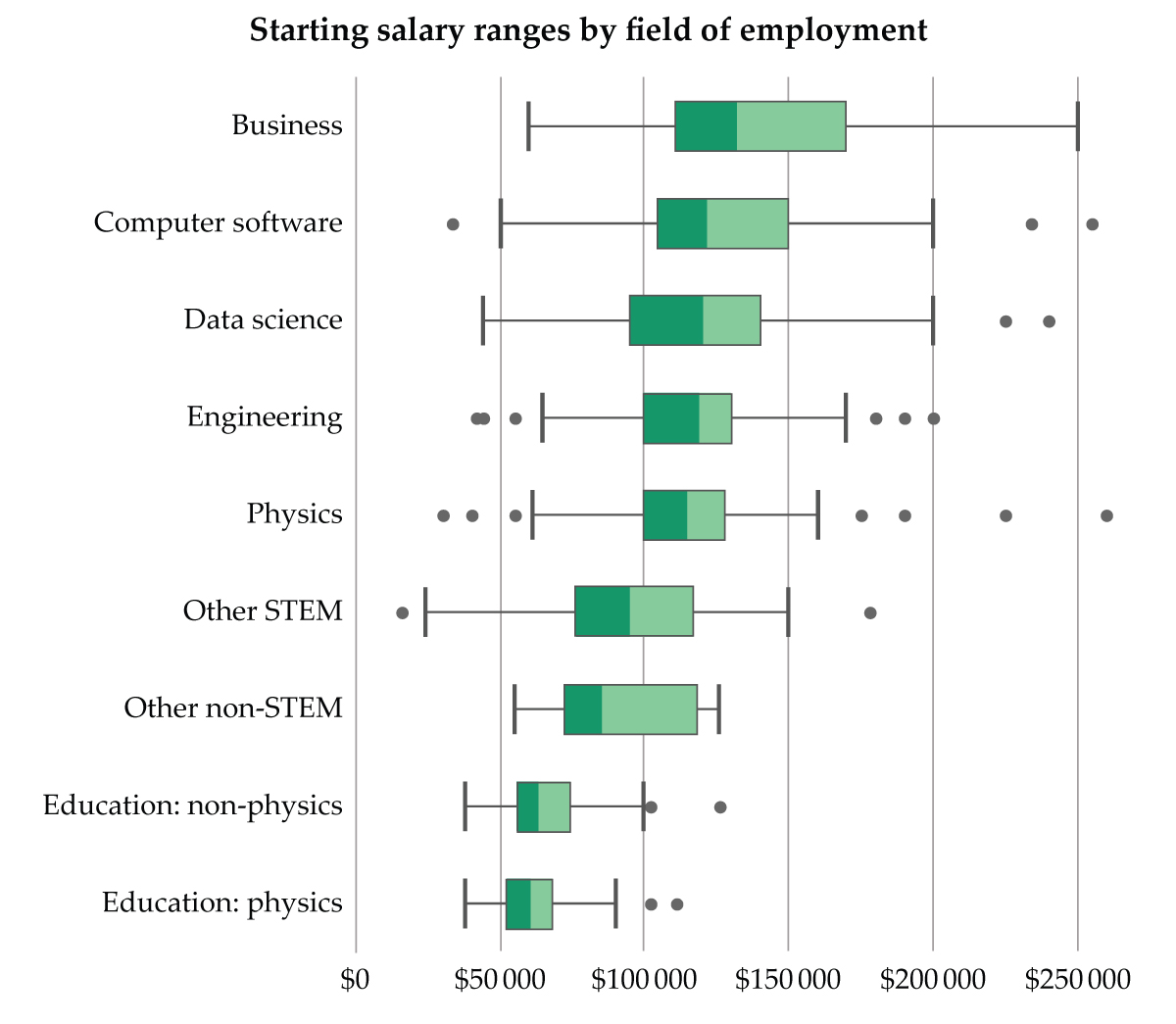Business, STEM jobs offer strong starting salaries to new physics PhDs
DOI: 10.1063/pt.fyjg.vvej
The median starting salary for recent physics PhD recipients who secured potentially permanent jobs in computer software, data science, engineering, or physics was at least $115 000 for each of those fields, according to newly published survey data. Nearly three-quarters of new physics PhDs work in those fields.
The data are from a survey of PhD recipients’ initial employment for the classes of 2018–22 conducted by the statistical research team of the American Institute of Physics (publisher of Physics Today). As shown in the figure, the highest-earning field was business, with positions offering a median starting salary of $132 000, and the lowest-earning field was physics education, with a median salary of just over $60 000. The US median household income in 2022 was $74 580, per the US Census Bureau.

(Figure adapted from P. Mulvey, J. Pold, J. Tyler, Who’s Hiring Physics PhDs, AIP Research, 2025

Survey respondents who were not in physics, engineering, or education were spread across a variety of jobs—in business and accounting, social media, and more. Employers included the health insurance company Aetna, eBay, Facebook, and the Boston Red Sox.
The vast majority of respondents across all fields said they used technical problem-solving skills at least monthly; many said the same for programming, advanced math, and other scientific and technical skills. Among the interpersonal and management skills that survey respondents frequently ranked as required in their jobs were teamwork, technical writing, and managing projects.
Explore employers, salary ranges, and skills needed in different sectors using the interactive charts at https://www.aip.org/statistics/whos-hiring-physics-phds
This article was originally published online on 6 June 2025.
